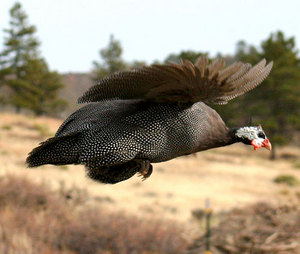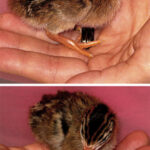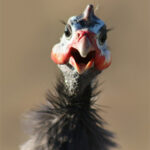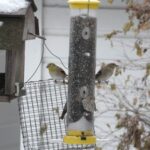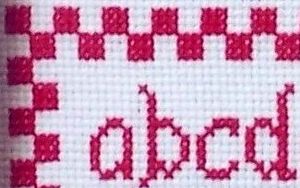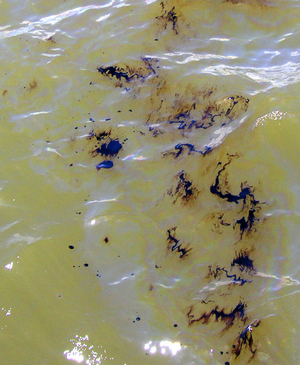Guinea fowl are wild, ground dwelling birds originally from Africa. There are Crested Guinea Fowl, Vulturine Guinea Fowl and Helmeted Guinea Fowl. Helmeted Guinea Fowl will be the focus of this article, and will hence be referred to simply as Guinea fowl.
Guinea fowl adults weigh around 3 pounds or so and can be as long as 27″. Though Guinea fowl originated in a dry, hot climate, they have been domesticated and can now be found throughout the world, including in some extremely cold climates. It is almost impossible to tell male and female adult Guinea fowl apart by their appearance. Sex of a Guinea fowl is most easily determined by listening to their calls, which are different for males and females. Over the years, breeders have managed to create many beautiful colors of Guinea fowl from the original pearl grey Guinea fowl stock.
Guinea fowl, like the North American wild turkey, spend the vast majority of their waking lives on the ground. They are only capable of short, powerful bursts of flight, but they can glide for great distances once airborne. The Guinea fowl diet consists of grains, seeds, grasses, leaves and insects – lots and lots of insects. Guinea fowl females will lay eggs, about 1 egg every other day, even without a male Guinea fowl being present. For Guinea fowl eggs to hatch, they must have been fertilized by a male. Guinea fowl will only lay eggs during the warmer months of the year. Guinea fowl eggs are slightly smaller than chicken eggs, and are delicious.
Guinea fowl have been enjoying a rapid growth in popularity over the past few years. This popularity is because of two traits of Guinea fowl: they make good watch animals and they eliminate the insects in their foraging areas. Guinea fowl are good watch animals because they will make a loud series of calls whenever anything new enters their area. These calls are audible for quite some distance. The insect eliminating prowess of the Guinea fowl is unmatched.
In the world of Guinea fowl, ticks are a delicious delicacy. Ticks carry diseases, some of which are quite serious – even life threatening. Guinea fowl will quickly rid their foraging areas of ticks. The Guinea fowl’s tick exterminating abilities are likely the biggest reason so many people are now starting to keep Guinea fowl. But Guinea fowl do not confine their diet to ticks alone. Guinea fowl eat virtually any insect – and in large numbers.
The reason we started keeping Guinea fowl was because we have a large organic garden and refuse to use insecticides. Insecticides are not only not environmentally friendly, they are not so good for spraying on your food, either. Our primary problem insect is the grasshopper. In our area grasshoppers are a very serious problem every year – often destroying entire gardens in a matter of a few days. A month after planting, our organic garden would have many thousands of resident grasshoppers, and more being hatched every day – until we started our flock of 30 pearl grey Guinea fowl.
We released our Guinea fowl into our garden in early September, when they were ten weeks old. It was late in the gardening season here, and our crops were already taking a real beating from the grasshoppers. Two days after leading our Guinea fowl into the garden, we could not find a single grasshopper. In fact, it was hard to find any insects at all. After the garden was insect free, we quit guiding the Guinea fowl and allowed them to free range at their own discretion.
Guinea fowl will wander up to about ¼ mile or so from their home base, which in our case is an enclosed coop yard and coop. As one would expect, the Guinea fowl will forage closest to their coop first, and then range out further and further as they devour the existing supply of insects. Within two weeks of allowing our Guinea fowl to free range, we noticed that insect populations all around our place were rapidly declining. After a month of our Guinea fowl free ranging, 10 acres of our property was virtually insect free.
Guinea fowl are exceptionally well equipped for snagging and eating insects. They can run fast, but they can move quickly – especially their heads and extendable necks. They have very keen eyesight, but only during daylight hours. At dusk, they start to have problems seeing and will roost for the night – usually on a high tree limb to avoid some predators. Ours return to the safety of the coop at night, as they were trained to do.
Guinea fowl are magnificent insect hunters that provide a great alternative to spraying toxins. They are also a lot of fun to watch and listen to. Guinea fowl bond to their keepers and other animals that they live near such as dogs, horses, sheep and goats. They are highly animated birds with boisterous, high energy personalities.
Keeping Guinea fowl is not for everyone. I’ve left a few links in the sidebar to other resources that will help you determine if Guinea fowl are right for you and your insect control needs. If you’re in a situation where you can keep Guinea fowl, consider keeping them to control all the insects in your area. If you decide to keep some Guinea fowl, you’ll be insect free – and have a great new source of entertainment.
